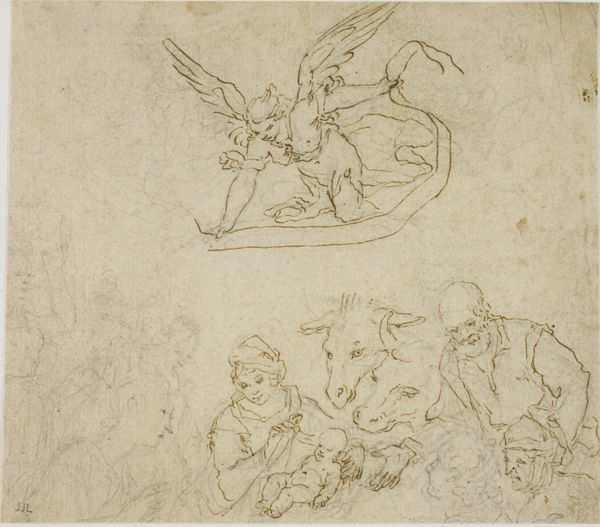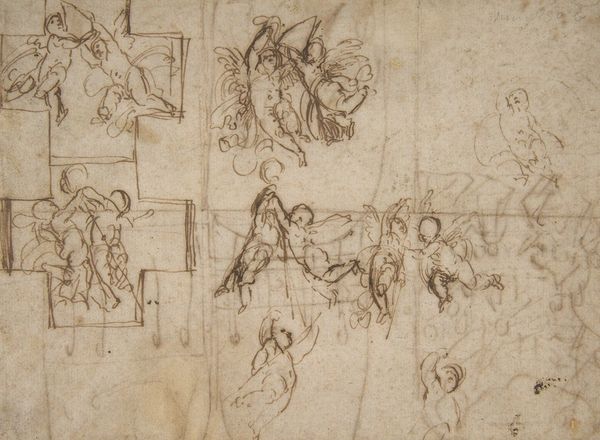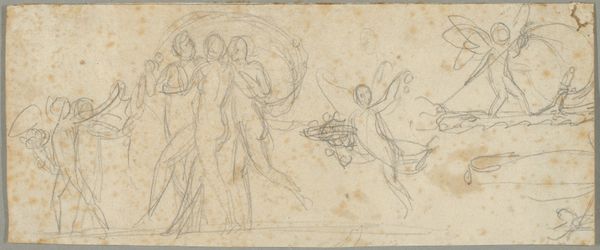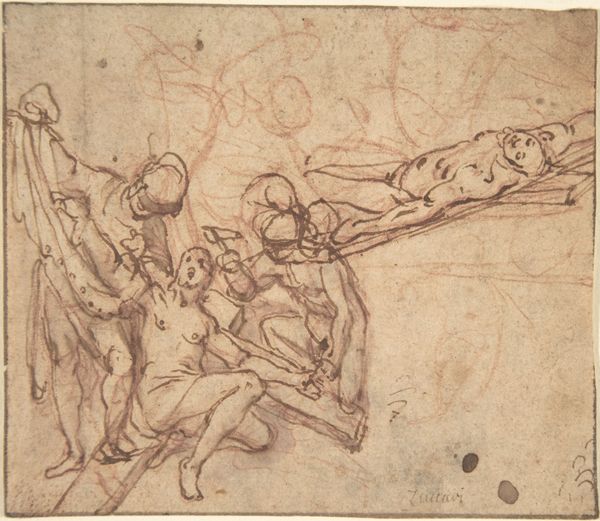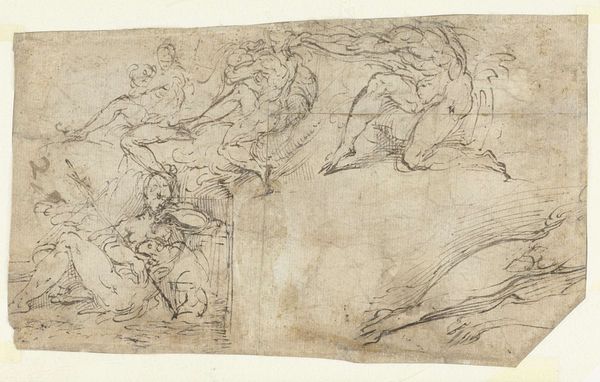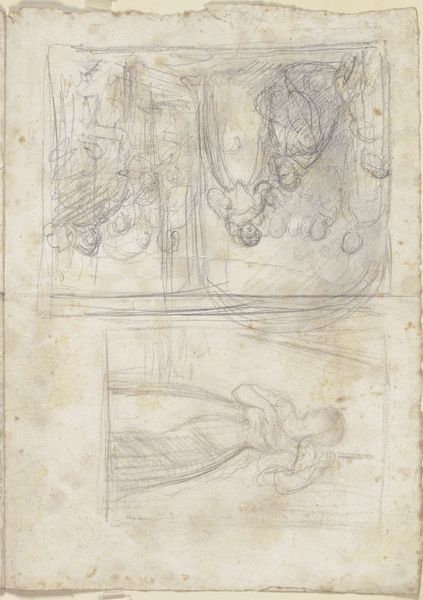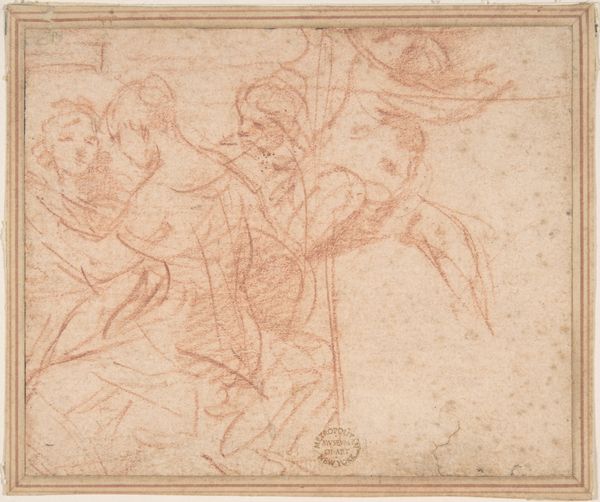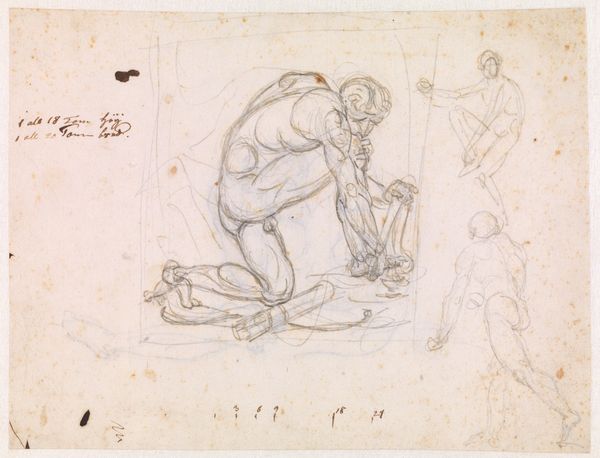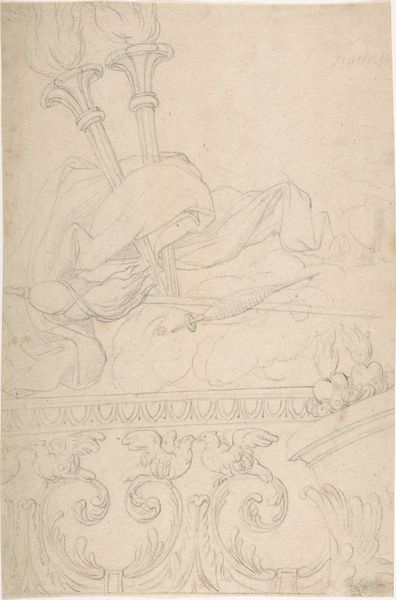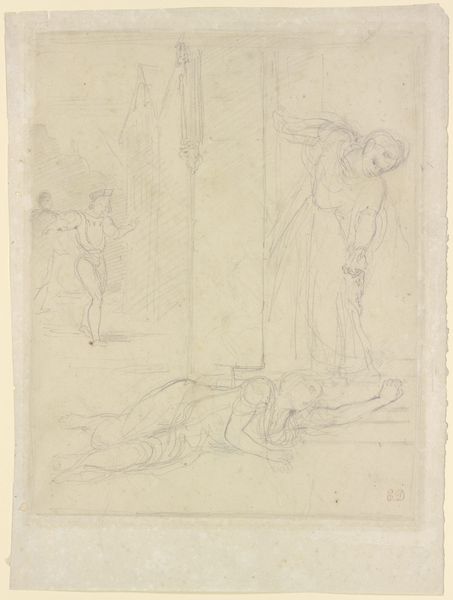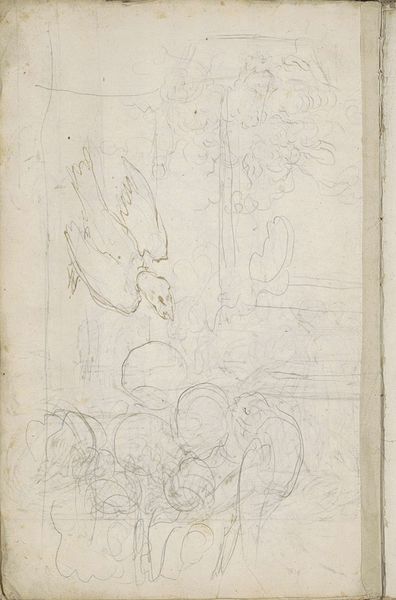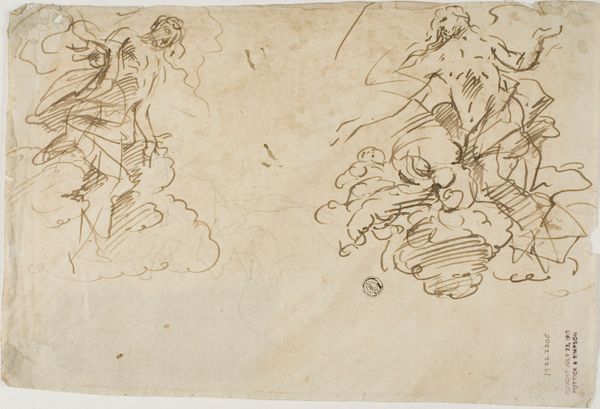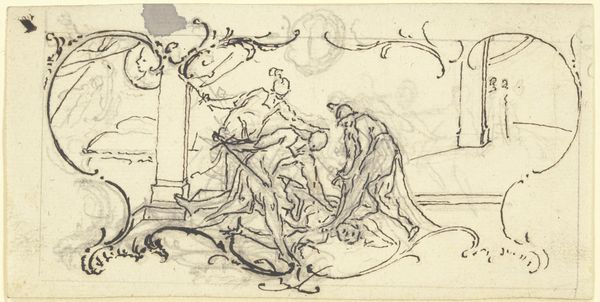
Vier schwebende Engel, die beiden oberen inzensierend Weihrauchfässer schwenkend
0:00
0:00
drawing, paper, pencil
#
drawing
#
figuration
#
paper
#
pencil
#
12_15th-century
#
early-renaissance
Copyright: Public Domain
Editor: This drawing, “Vier schwebende Engel, die beiden oberen inzensierend Weihrauchfässer schwenkend”, meaning "Four Floating Angels, the Upper Two Censing Swinging Incense Burners", attributed to Hubert van Eyck, is made of pencil on paper. What strikes me is the delicacy of the lines, and how they manage to suggest so much movement. What do you see in this piece? Curator: I see an object deeply embedded in the culture of its time, particularly the pervasive religious imagery and its public function. Van Eyck’s workshop helped popularize this very naturalistic but still idealized portrayal of holy figures in the early Renaissance. Consider how such images shaped religious experience and even political discourse in the 15th century. What role did such depictions of heavenly beings play? Editor: I guess, it gave the population, most of whom couldn't read, a very immediate connection to their faith and the idea of divinity. Curator: Exactly! The display and ritual use of images like these helped solidify social order and offered a glimpse into an idealized spiritual realm. And the commission, the materials used, all reflect complex power dynamics. Were these drawings accessible to everyone? Who got to see them? Editor: Not everyone, of course. This preparatory drawing shows signs of meticulous planning, perhaps for a larger altarpiece intended for a wealthy patron. It probably resided within a private collection, emphasizing a class divide in experiencing religious art. Curator: Precisely! Consider then, how our access to this piece has changed through museum display. How do you think the drawing's display in a museum context changes the message or function of this piece? Editor: Well, today anyone can theoretically see it, stripping away some of the original exclusivity and imbuing it with educational value. This conversation shifted how I appreciate not just the art, but how cultural and societal factors frame it. Curator: And hopefully makes us question our own presumptions when experiencing this art today. It's crucial to remember the changing contexts that influence our engagement with these objects.
Comments
No comments
Be the first to comment and join the conversation on the ultimate creative platform.
